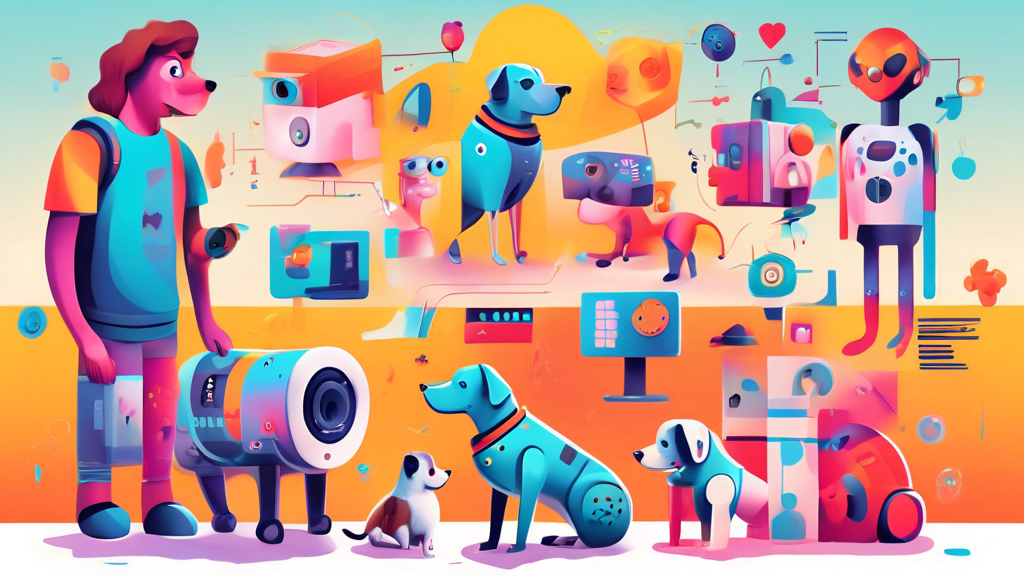Unleashing AI Innovations: Deciphering Canine Vocalizations
Imagine being able to understand your dog’s bark beyond the usual woof. It’s fascinating to think that top AI innovations might soon help us decode if Fido is feeling playful or aggressive. Researchers at the University of Michigan are pushing the boundaries of animal communication by developing AI tools that analyze dog barks. Using human speech models, they strive to recognize the subtleties in canine vocalizations. Picture this – you’re at the park, and suddenly you know just by the bark if it’s time to fetch or to stand down. Sounds like a dream, right? Well, they’re getting closer every day.
Unleashing AI Innovations: Leveraging Children’s Visual Learning for AI Development
Kids have an amazing way of learning about the world around them. Have you ever noticed how quickly they recognize objects and understand their environment? Researchers at Penn State are mimicking this learning process to enhance innovations of AI systems’ object identification and navigation capabilities. By using information about spatial positions, they’re training AI visual systems more efficiently. This new approach could transform how robots and automated systems navigate complex environments, reducing errors and improving efficiency. It’s like teaching a smart toddler to navigate a bustling city – only this toddler updates its learning faster than you can say artificial intelligence.
Read our Article on Exploring Personalized AI Learning Platforms: Customizing Education
Unleashing AI Innovations Shielding Humans from Emotional Strain of Hate Speech Monitoring
Dealing with hate speech online is emotionally taxing, but there’s hope on the horizon. Researchers at the University of Waterloo have created a machine-learning method called the Multi-Modal Discussion Transformer (mDT). This tech detects hate speech on social media with an impressive 88% accuracy. Imagine the relief for social media moderators who no longer have to read through thousands of harmful comments. Instead, they can focus on creating positive interactions while AI handles the dirty work. It’s like having a superhero sidekick who never gets tired and always keeps an eye out for the bad guys.
Moving Forward
The world of AI is constantly evolving, and these advancements are just the tip of the iceberg. From understanding dog barks to shielding us from online hate, AI is making strides in improving our day-to-day lives in extraordinary ways.
So, next time you’re thinking about how the best ai innovations and tech is shaping our future, consider these advancements. They might sound like they’re straight out of a sci-fi movie, but they’re happening here and now. And who knows? Maybe one day your dog might actually tell you just how much they love you – with a little help from AI, of course.
Explore More:
The pace of work is outpacing our ability to keep up. AI is poised to create a whole new way of working.
Frequently Asked Questions: Unleashing AI Innovations
Q1: How is AI being used to understand dog barks?
A1: Researchers at the University of Michigan are developing AI tools that analyze dog barks using human speech models. The goal is to recognize subtleties in canine vocalizations, potentially allowing us to understand if a dog is feeling playful, aggressive, or expressing other emotions.
Q2: What approach are researchers using to improve AI’s visual learning capabilities?
A2: Researchers at Penn State are mimicking children’s visual learning processes to enhance AI systems’ object identification and navigation capabilities. They’re using information about spatial positions to train AI visual systems more efficiently, which could improve how robots and automated systems navigate complex environments.
Q3: How is AI being used to combat online hate speech?
A3: Researchers at the University of Waterloo have created a machine-learning method called the Multi-Modal Discussion Transformer (mDT). This technology can detect hate speech on social media with 88% accuracy, potentially reducing the emotional strain on human moderators.
Q4: What are the potential benefits of these AI innovations?
A4: These innovations could lead to better communication with pets, more efficient and accurate robotic navigation, and safer online environments with reduced exposure to hate speech for both users and content moderators.
Q5: Are these AI technologies currently available for public use?
A5: The article doesn’t specify if these technologies are available for public use. They are likely still in the research and development phase, but they represent promising advancements in AI that could impact various aspects of our daily lives in the future.
Q6: How might these AI innovations affect jobs in the future?
A6: While the article doesn’t directly address job impacts, these innovations could potentially create new job opportunities in AI development and application. However, they might also automate certain tasks, such as content moderation, which could affect some existing job roles.
Q7: What ethical considerations might arise from these AI innovations?
A7: Ethical considerations could include privacy concerns related to analyzing animal or human communication, the potential for AI bias in visual learning systems, and the balance between automated content moderation and human oversight in addressing online hate speech.
It’s interesting to see how AI is learning to understand emotions, both human and animal. It feels like we are finally bridging the gap between us and the digital world.” – Jane Doe, AI Researcher
